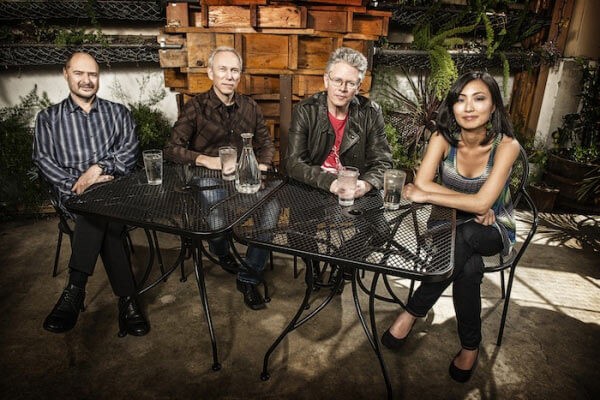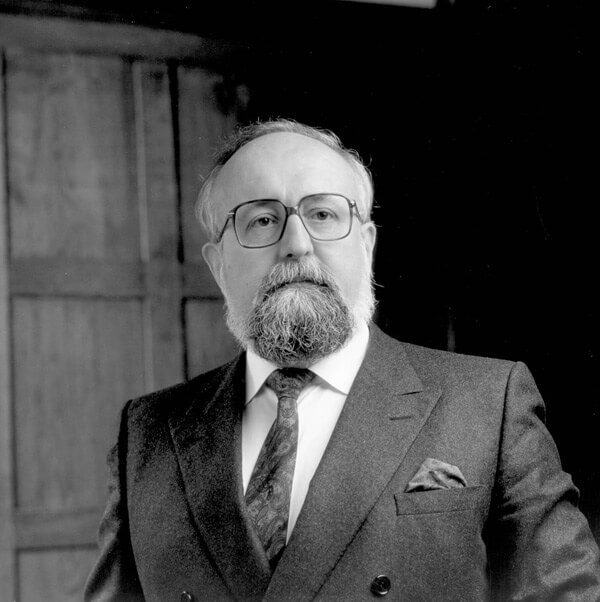 The extended weekend of February 6 thru 9 was a particularly exciting one for the Bay Area, as the musical luminary Kronos Quartet continued their 40th anniversary celebration with a string of four concerts that paired old and new repertoire with four local opening acts, including Amy X Neuberg, Friction Quartet, the Mobius Trio, and the Living Earth Show. Neuberg has been a local staple for some time now, while the latter three groups are part of the recent wave of emerging new music ensembles that are rapidly taking the forefront in the Bay Area. The combination of seasoned veterans and up-and-coming young guns sharing the stage brought an electricity and energy to the city’s new music scene that can only be described as heartwarming, encouraging, and utterly infectious. I attended the Friday night show, which featured the Mobius Trio as the opening act. The Kronos set featured selections from their eclectic repertoire, including music by Penderecki, Oswald, Dessner, Becker, and the world premiere of a new work by winner of the quartet’s fifth “Under 30 Competition” Mary Kouyoumdjian.
The extended weekend of February 6 thru 9 was a particularly exciting one for the Bay Area, as the musical luminary Kronos Quartet continued their 40th anniversary celebration with a string of four concerts that paired old and new repertoire with four local opening acts, including Amy X Neuberg, Friction Quartet, the Mobius Trio, and the Living Earth Show. Neuberg has been a local staple for some time now, while the latter three groups are part of the recent wave of emerging new music ensembles that are rapidly taking the forefront in the Bay Area. The combination of seasoned veterans and up-and-coming young guns sharing the stage brought an electricity and energy to the city’s new music scene that can only be described as heartwarming, encouraging, and utterly infectious. I attended the Friday night show, which featured the Mobius Trio as the opening act. The Kronos set featured selections from their eclectic repertoire, including music by Penderecki, Oswald, Dessner, Becker, and the world premiere of a new work by winner of the quartet’s fifth “Under 30 Competition” Mary Kouyoumdjian.

Although Mobius Trio’s set consisted of only two works, their choices were substantive and captured the full range of their sonic potential as a guitar trio. The opener by Brendon Randall-Myers, written for classical guitars, immediately shattered any preconceptions about the instrument and established the prerogative of the group. Throughout the fifteen-some minutes of Making Good Choices, the group wrung from their axes a menagerie of extended techniques, warping them into sinewy chromatic webs, ghostly ambience, and inebriated troll metal. The group closed with a recent commission for electric guitars by Samuel Carl Adams, which complemented the mercurial nature of the previous tune by offering a kind of gently undulating stasis. Adams’ Study for Mobius, an almost imperceptibly slow three-part canon with electronic background ambience, pulsed and shimmered with crisp and sustaining textures that are better heard than described. The trio, consisting of Mason Fish, Matthew Holmes-Linder, and Robert Nance, seemed humbled and grateful to be opening for their self-professed musical idols – that being said, they proved in every way that they were capable of holding their own, both as performers and curators of a new generation of music.
Not long after the lights dimmed and Kronos Quartet walked onstage, a projection of the score to Krzysztof Penderecki’s Quartetti per Archi began to glide silently across the back wall of the hall. The group, backs turned to the audience, read directly from the image, playing their notes as they intersected with a large orange vertical stripe that ran down the middle. It was a highly effective and entertaining spin, not only because the score itself was so visually stimulating, but because it provided the viewer an additional entry point into an otherwise rather disjunct work.

John Oswald’s Specter and Bryce Dessner’s Tenebrae focused on elements of aural illusion. Oswald’s work, a dramatically extended play on tuning up, built from single tones to an overwhelmingly intense climax, with the group functioning more as physical actors than sound-makers. Dessner’s work, a long, episodic exploration of light imagery translated into sound, reached exquisite moments of beauty, one of which employed extremely delicate circular bows on all four instruments, producing a gorgeous kaleidoscope of hushed tones. The introduction of voice in the last third of the work was surprising but effective, building the work to a strangely bittersweet conclusion.
Dan Becker’s Carrying the Past, commissioned and premiered by Kronos in 2013, was a truly moving exploration of musical genealogy and hauntology, joining Becker’s interest in minimalism and process music with recordings of his grandfather’s jazz band. Rather than creating a synthesis between the two styles, Becker instead crafted a work of Lynch-esque juxtapositions and nonsequiturs in search of a “chemical reaction” between the two worlds. The result was emotional, charming and thought-provoking.

The centerpiece of the evening, Mary Kouyoumdjian’s much-anticipated premiere Bombs of Beirut, was a thoroughly engaging work that straddled the line between sound documentary and concert music. Kouyoumdjian’s wonderful quartet score appropriately supported and added musical commentary to a variety of recorded interviews regarding the Lebanese Civil War. The three-movement work, winding through various voices, tales, and musical textures, reached its emotional climax shortly before the final movement. In the hall, which slowly grew completely dark, a field recording of a Lebanese bombing – captured on a tape recorder placed in the middle of the city, as Kouyoumdjian noted in her pre-concert speech – blared with such intensity that the space itself seemed under siege. The aural document itself was so utterly moving and well placed that the work would have left an impression regardless of the composer’s quartet writing. Fortunately, Bombs of Beirut was a well-crafted, thoughtful and engaging work from beginning to end.
While all the musicians were in top form, I was particularly impressed with the quartet’s newly inaugurated cellist, Sunny Yang, who dug into each of her (many, MANY) notes with almost palpable intensity. A massive hat tip, also, to the sound designers of Kronos Quartet, who brought very detail of the group’s sound into full focus, particularly in the final two pieces on the program.
Unlike many of the gigantic spaces that superstars like Kronos are obliged to book, Z-Space, the wonderful venue that hosted all four concerts on this series, was the perfect size for a string quartet, and made the event feel all the more intimate and energetic. The audience was composed almost entirely of friends and colleagues. (As in most artistic communities, San Francisco consists of a massive, tangled network of artists that are constantly hooking up in various ways to pursue new endeavors – it’s a little bit like the Real World or Jersey Shore, but paler, and with more mustaches.)
All in all, the evening was certainly an apex for a group that has had many, and a new high for the artists that they have encouraged and nurtured. Kudos to all that took part in celebrating the old and championing the new.
























